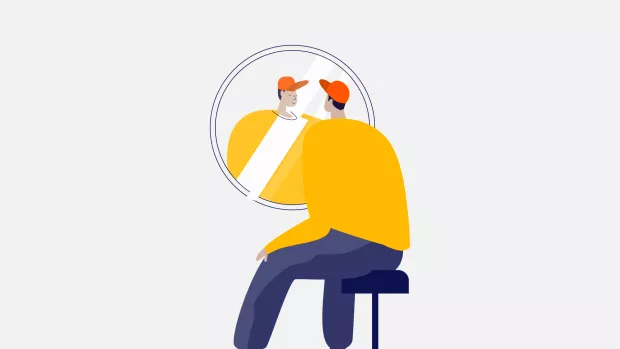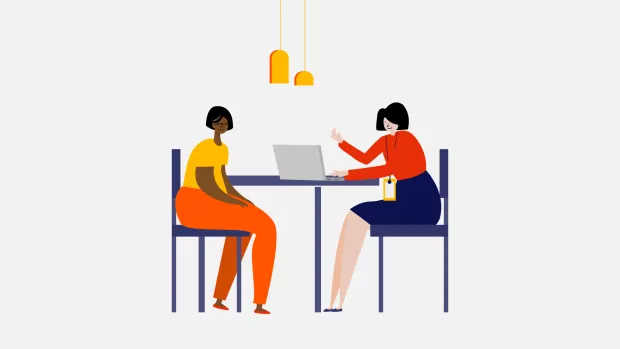
How MS affects my eyes
I was diagnosed with MS in 2001. Around 10 years later, my neurologist told me I also have vision symptom called internuclear ophthalmoplegia (INO).
Problems with eye movement
INO is caused by an MS lesion in a specific area of the brain that prevents your eyes from working together. It can be detected when a neurologist asks you to follow their finger from one side to the other with your eyes.
If it’s present, one eye will move normally from side to side, but the other one will travel only so far before shuddering to a halt.
MS has hidden and visible symptoms
So many MS symptoms are invisible and rely on us explaining how they feel. In a perverse way, I quite enjoy having a symptom people can see. I think my neurologist agrees. At annual check-ups, he often asks me if he can demonstrate how my INO presents to colleagues and students.
Because INO means my eyes don’t work together, they get fatigued more quickly. When this happens, the muscles that control my left eye go into spasm – a painful, disorienting symptom called nystagmus. And the more fatigued I get, the more my brain tries to compensate by rapidly switching my vision from one eye to the other. This causes vertigo, which leaves me feeling dizzy and nauseous.
When I visited my sister in the summer, I sent him some photos of our adventures, including this one. My INO was so pronounced that he called me to beg me to sleep, in case I fell over and hurt myself.Danielle
Living with eyesight problems
It isn’t until you lose something that you realise how important it was. I’m no longer able to drive as I can’t reliably judge which lane traffic is in. Losing my car has made my life feel a lot smaller. Public transport can also be difficult - I struggle with escalators and stairs as my depth perception is so hopeless.
My husband and I love hiking, but coming down mountains is slow going nowadays. We’ve realised it’s much easier to invite people to overtake us by saying I have visual impairment, rather than trying to explain it’s MS-related.
When you live with someone who has MS, you become used to recognising the warnings of an imminent flare up. For my husband, INO is one of the first signs I need to rest.
When I visited my sister in the summer, I sent him some photos of our adventures. In one of them my INO was so pronounced that he called me to beg me to sleep, in case I fell over and hurt myself.
An eyepatch relieves my pain
Unfortunately, standard glasses don’t help INO. Some people are prescribed lenses with prisms to combat the double vision it causes, but because the severity of my INO varies from day to day, they don’t work for me.
I find wearing an eyepatch the most helpful way to manage when it gets painful. I have a specialist soft domed one that doesn’t rest against my eyelid, as that seems to set off the painful spasms. If I don’t have my eyepatch, I often realise that I’ve closed my left eye to help me focus.
My MS can make me laugh
I know that in the grand scheme of things, INO isn’t the worst MS symptom I could have.
In fact, when it isn’t painful, it can be quite amusing. At my parents’ 50th anniversary party recently, my cousins and I were taking selfies. One of them said, “OK, now let’s try to get a nice photo of us all. Dani, don’t do the cross eyed thing this time.” I had to tell them I wasn’t doing it on purpose – it’s the MS!
Help raise awareness of MS
This MS week we need you to help spread the word about MS. Will you help make invisible symptoms visible?
Get involved with MS Awareness week, tell the world #ThisIsMS
Will you join Team Stop MS?
We’re the closest we’ve ever been to treatments for everyone.
We can see a future where no-one needs to worry about their MS getting worse. To get us there we’ve launched our biggest fundraising appeal yet and we need your help.



